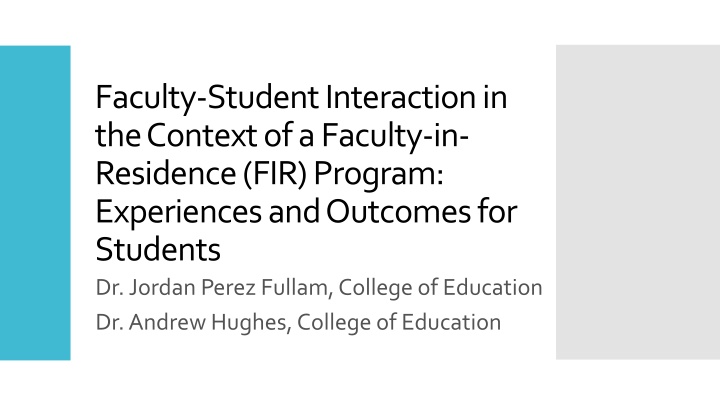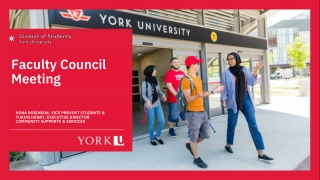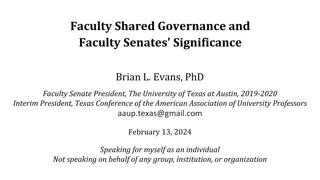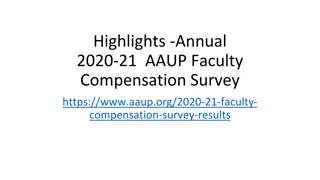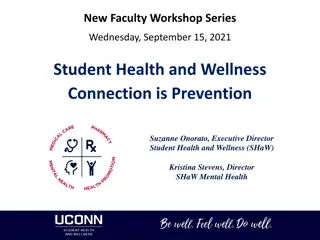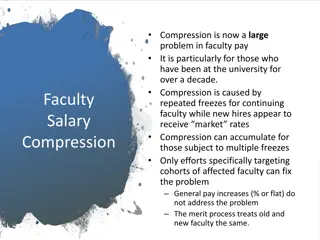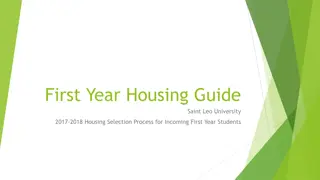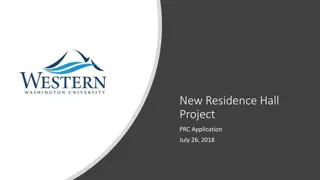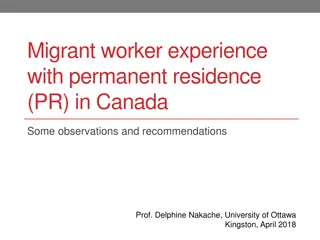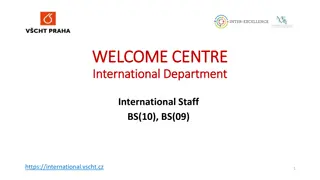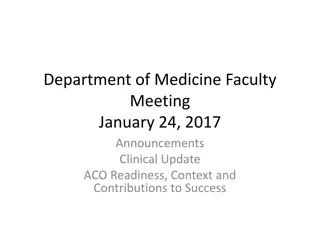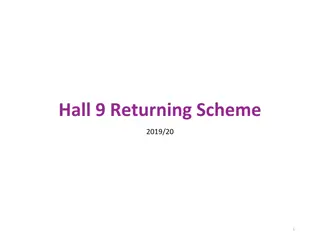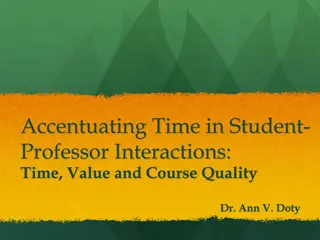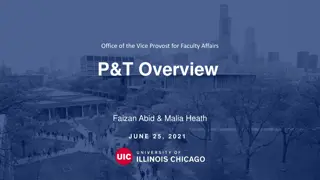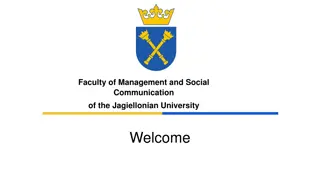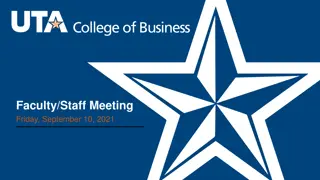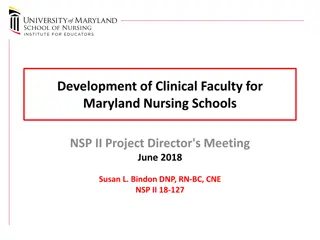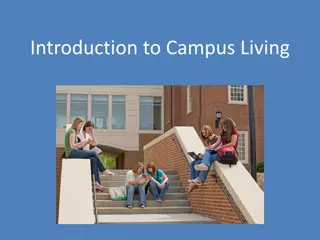Enhancing Student Experiences Through Faculty-in-Residence Programs
Explore the Faculty-in-Residence (FIR) program at CSUSB, focusing on the interactions between faculty and students, the impact on students, and the collaborative efforts to build community in residence halls. The program aims to bridge the gap between student affairs professionals and faculty, providing students with social support systems crucial for academic success.
Download Presentation

Please find below an Image/Link to download the presentation.
The content on the website is provided AS IS for your information and personal use only. It may not be sold, licensed, or shared on other websites without obtaining consent from the author.If you encounter any issues during the download, it is possible that the publisher has removed the file from their server.
You are allowed to download the files provided on this website for personal or commercial use, subject to the condition that they are used lawfully. All files are the property of their respective owners.
The content on the website is provided AS IS for your information and personal use only. It may not be sold, licensed, or shared on other websites without obtaining consent from the author.
E N D
Presentation Transcript
Faculty-Student Interaction in the Context of a Faculty-in- Residence (FIR) Program: Experiences and Outcomes for Students Dr. Jordan Perez Fullam, College of Education Dr. Andrew Hughes, College of Education
The leading researchers and professional organizations in student affairs have called for institutions of higher learning to create integrated learning environments that bridge the divide between student affairs professionals and faculty. (NASPA & ACPA, 2004; Manning et. al, 2013)
However, this is a difficult task for most colleges and universities where student affairs offices and faculty departments have historically been separated by differences in duties, career specializations, professional culture, and even physical distance (Browne et. al, 2009).
Faculty member lives in an apartment on campus and interacts with residential students Faculty member has no supervisory role, instead focusing on programming and community building FIR programming includes book clubs, running clubs, film series, speaker series, outdoor activities, music groups, arts & crafts workshops, and open houses As Rhoads (2009) points out, these activities are not just fun and games, as they often appear to be, but, more important, are aimed at helping students form the connections and social support systems that are helpful for academic success (p. 21). What is a Faculty-in- Residence Program?
The Faculty-in-Residence Program at CSUSB Faculty-in-Residence program started at CSUSB in 2016 with 4 FIRs FIRS live on campus and are assigned to different residential villages (AV, UV, SV, CV) Currently, 5 faculty serve as FIRs, including: 1. Dr. Joseph Wellman, Psychology 2. Dr. Isabel Huacuja Alonso, History 3. Dr. David Marshall, English 4. Dr. Manijeh Badiee, Psychology 5. Dr. Jordan Perez Fullam, Education
RESEARCH QUESTIONS What kinds of interactions are FIRs having with our students? How are students impacted by their interactions with the FIRs? What factors led to particular students engaging in sustained interactions with the FIRs? What obstacles and opportunities arise as student affairs professionals, faculty, and students collaborate to build community in the residence halls?
RESEARCH DESIGN 1) Qualitative interviews with 15 students 2) NSSE data related to experiences with faculty Fitzpatrick (2011) suggests that a goal of research on FIR programs should be to shed light on the question of whether true community is formed on campus and if social capital can be acquired by or collaborative efforts (p. 78).
Academic self-concept (Kuh & Vesper 1997; Woodside et al., 1999) Persistence (Chickering & Gamson, 1987; Tinto, 1993) Academic performance (Terenzini et al., 1996; Woodside et al., 1999) Research on Faculty- Student Interaction Positive attitudes toward learning (Pascarella & Terenzini, 1991; Cruce et al., 2006) Student retention (Milem & Berger, 1997; Pike et al., 1997) Personal development (Astin, 1993; Kuh, 1995) General satisfaction with the higher education experience (Wilson et al., 1975; Lamport, 1993) Positive multicultural attitudes (Armstrong, 1999) Critical thinking skills (Frost, 1991; Terenzini et al., 194)
Academic-oriented interactions (Anaya & Kole, 2001; Kuh & Hu, 2001; Kuh, 2003; Umbach & Wawrzynsi, 2005; Cotten & Wilson, 2006) Social interactions (Aylor & Oppliger, 2003; Cox & Orehovec, 2007; Healea et al., 2015) Sustained interactions (Ellett & Schmidt, 2011) What Types of Faculty- Student Interactions are Impactful for Students?
CHALLENGES FOR FACULTY Lack of understanding of roles (Jessup-Anger et al., 2011; Manning et al., 2013; Golde & Pribbenow, 2000) Faculty time constraints(Fitzpatrick, 2011; Healea et al., 2015; Humphrey et al., 2015) Faculty discomfort with interacting with students outside of classrooms (Browne et al., 2009) CHALLENGES FOR STUDENTS RAs play a critical role in success of FIR programs (Ellett & Schmidt, 2011) Student time constraints(Ellett & Schmidt, 2011) Poor attendance at academic-oriented programs planned by FIRs (Browne et al., 2009) Research on Faculty-in- Residence Programs
1) Students want us to find ways to make FIRs more visible on campus Academic and social interactions are impactful for students Students are benefitting both socially and academically from interactions with FIRs Sustained interactions are essential(Ellett & Schmidt, 2011) 2) Preliminary Findings 3) 4)
From our perspective, it is misguided to debate whether only academic and intellectual interactions benefit students, or whether social interactions can also be beneficial. Cox and Orehovec (2007), for example, suggest that social interactions can have a humanizing and personalizing effect for FIRs and students, and can serve as a stepping stone to more substantial interactions later (p. 26). As FIRs and students build deeper relationships, the sustainedinteractions that result may open more and better opportunities for FIRs to serve as academic mentors and intellectual role models: These sustained interactions between students and faculty create opportunities to share academic goals and learn from one another in the residence hall setting (Ellett & Schmidt, 2011) (p. 32). In other words, intellectual and social interactions may be mutually reinforcing in the context of meaningful and productive relationships between FIRs and students.
